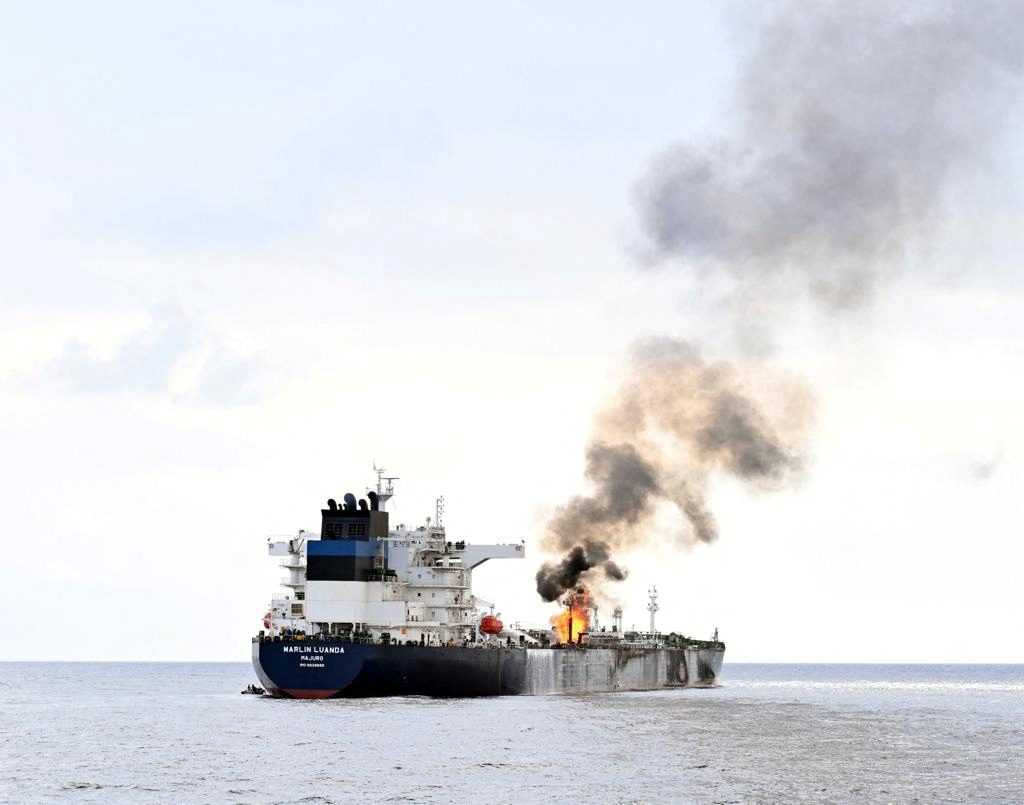The Triple-E containership Munkebo Maersk calls at DP World’s London Gateway in February 2015. Photo credit: London Gateway
By Gavin van Marle
(The Loadstar) – The continuing cost-per-slot supremacy of ultra-large container vessels (ULCVs) was called into question by speakers at last week’s TOC Container Supply Chain event in Hamburg.
With bunker prices still at low ebb, and daily charter rates at some of the lowest levels seen for many years, the cascading of tonnage out of the Asia-Europe trade by the introduction of 18,000 teu-plus vessels has resulted in a raft of large tonnage being available to carriers at rock bottom rates.
Andrew Penfold, director at Ocean Shipping Consultants, said: “There are now a lot of 12,000 teu vessels coming onto the market at rates which disrupt the cost savings offered by ULCVs.”
Franck Kayser, senior director of operations and logistics at niche carrier NileDutch, added: “If you take 8,500 teu vessel now that was built 10 or 15 years ago, there are a lot of them that you could fix at $6,500-$7,500 per day.
“If you compare that to a super fuel-efficient 14,000 teu vessel, and on today’s bunker rates, the slot cost is pretty much the same,” he added.
Continuing poor freight and charter rates were blamed by Mr Penfold on the industry overcapacity.
“This is as bad as it’s ever been. Freight and charter rates are nowhere near break-even points. How have we got here? Partly through the over-optimism of carriers who thought there would be larger volumes than there have been. The growth rate is much slower than we had hoped and come to expect.
“The financing of these ships is also an issue. At the moment, money is very cheap and lines are faced by the prisoner’s dilemma – for a particular line there is often a very strong and rational reason behind ordering vessels of these sizes, but when everybody does it the whole market can be turned right over, and at the same time some lines are investing for market share and not for profitability in the short term,” he said.
He added that while the industry overcapacity had been caused by the appearance of ULCVs, other sectors, such as the 1,500-2,500 teu feeder sector was facing a shortage of tonnage.
“Although the supply-demand balance varies for each particular vessel size, the massive overcapacity in the largest fleet sectors pushes down the earnings – there is very close correlation between underlying productivity (demand over supply) and earnings, and this link will continue and define market conditions in coming years,” he said.
And despite the fact that beyond slow-steaming and the blanking of services, lines appear to have few options for capacity management, Mr Penfold suggested that a new round of vessel ordering could take place after 2018, when Ocean Shipping Consultants expects supply and demand to have reached some level of parity, with possibly even larger vessels ordered.
“Bearing in mind that the economies of scale on a ULCV only work if it is full, the sums on a 24,000 teu ship would have per slot cost savings of 8-9% over the largest 18,000 teu ships we have at the present,” he said.
He added that incentives from shipyards desperate for orders from the industry had also played its part in the present overcapacity.
“Shipyard capacity is also very high and money is cheap, which means there are some really good deals available for a line willing to place orders – and I think this is the most significant factor that has driven the additional ordering of ULCVs in the past 12 months or so,” he said.
However, James Frew, senior analyst at Maritime Strategies International, reminded delegates that even with lower ship prices, the financial precariousness that many carriers found themselves in still meant ordering came with a lot of risk.
“You have to make a massive bet to make those investments. If you look at OOCL’s order for ULCVs, the value of the order was almost the same as the entire market cap of the company, so don’t forget the risk these companies are taking,” he said.
The Loadstar is fast becoming known at the highest levels of logistics and supply chain management as one of the best sources of influential analysis and commentary.
Check them out at TheLoadstar.co.uk, or find them on Facebook and Twitter.
Unlock Exclusive Insights Today!
Join the gCaptain Club for curated content, insider opinions, and vibrant community discussions.

 Join The Club
Join The Club













